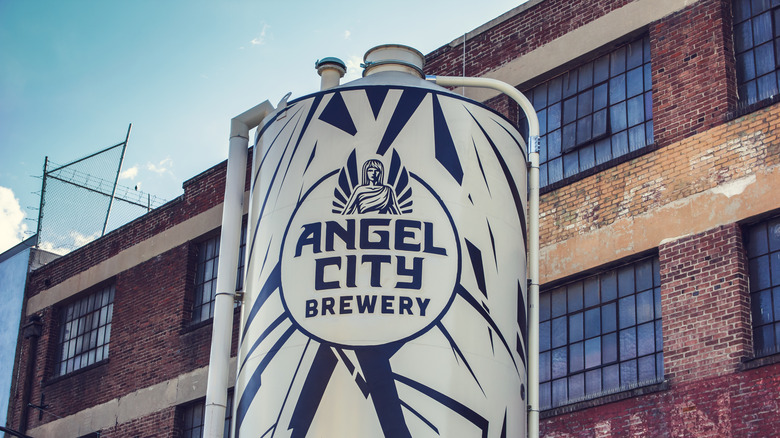How Some Global Breweries Have Experimented With Avocado Beer
Avocados are having their moment — although "moment" doesn't seem like the right term anymore. What began as a gradual increase in avocado sales throughout the 2000s has exploded into a worldwide craze, reported The Washington Post. Anyone who's eaten at a swanky brunch spot can see the trend shows no sign of slowing down. A huge factor in eating avocados every day is this fruit's potential to reduce bad cholesterol. Ongoing research efforts could reveal even more benefits that escalate the trend of including avocado on toast and in smoothies. Given their nearly global popularity, it should come as no surprise that avocados are now even making their way into beer.
This unique idea originated in Los Angeles at Angel City Brewery, which debuted an Avocado Ale in 2013 (via Vice). The Brewery hosts an annual avocado festival with numerous avocado food pairings, but the star of the show is the beer. Developed by brewmaster Dieter Foerstner, only a limited batch is brewed each summer, according to the Los Angeles Times.
A classic ale with an avocado twist
It didn't take long for the idea of avocado beer to catch on. In 2015, Vice profiled Daniel Wind of Bush Shack Brewery in Yallingup, Western Australia, who was inspired by Foerstner to make his own beer for a local avocado festival, with New Zealand's Rocky Knob Brewery following suit two years later (via the New Zealand Herald). One commonality between all of these breweries is that they make their avocado beer with a traditional ale base.
The pioneers at Angel City Brewing start by making summery kölsch ale, a German-style beer with a light color and low alcohol content. According to Insider, avocados aren't added until after the kölsch has fermented. Then, a pureed mixture of avocados, cilantro, and lime juice are dumped into the vats and left to ferment for an additional two weeks. Avocado primarily serves a textural purpose, lending a uniquely creamy mouth feel to the beer. As far as taste, the avocado does not add much, but the cilantro and lime juice provide a citrus-forward flavor while retaining the familiar presence of kölsch (per the Los Angeles Times). We're here for continued experimentation.

